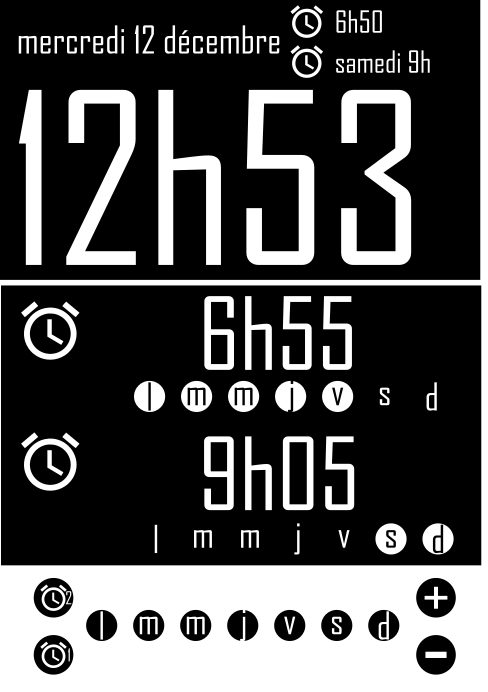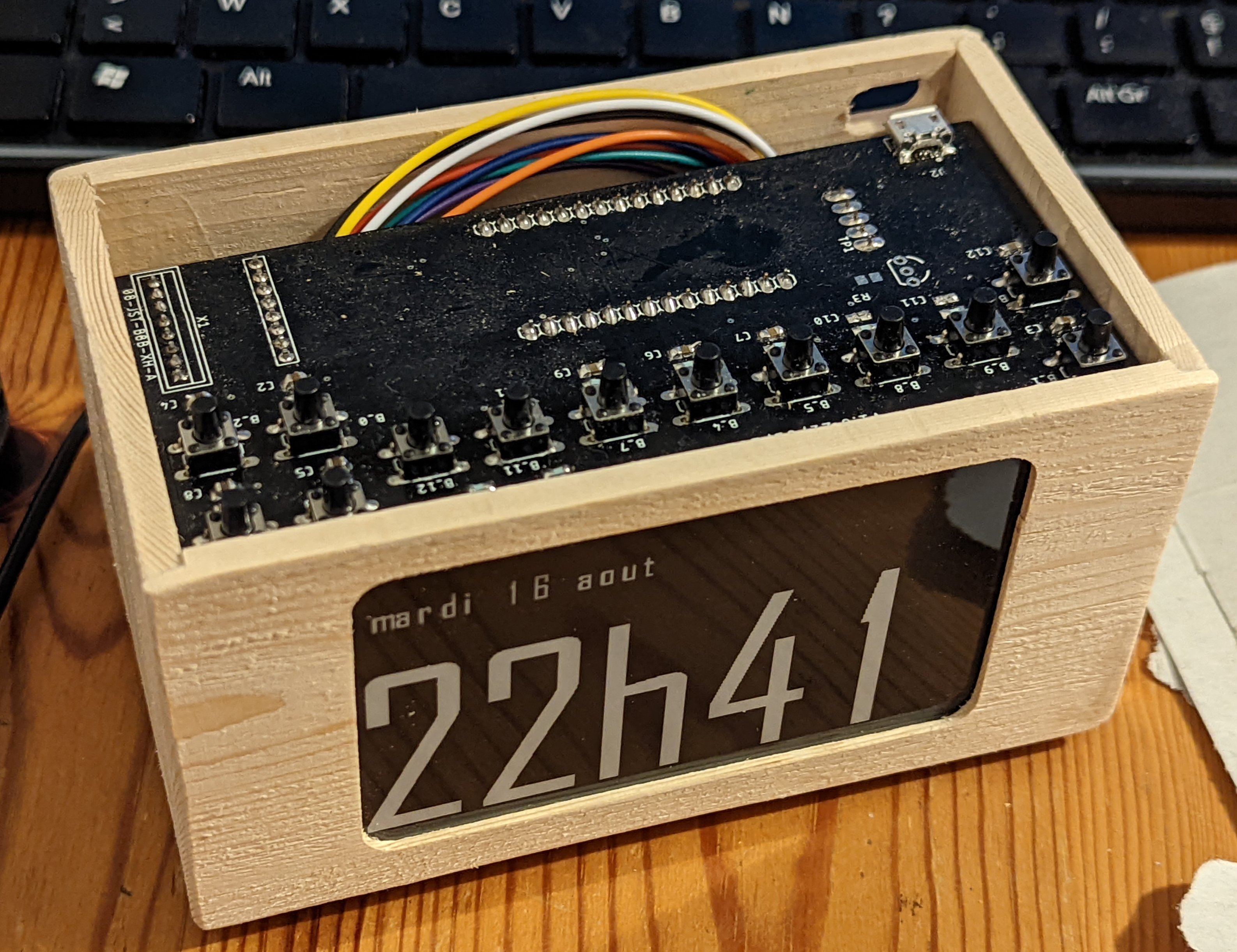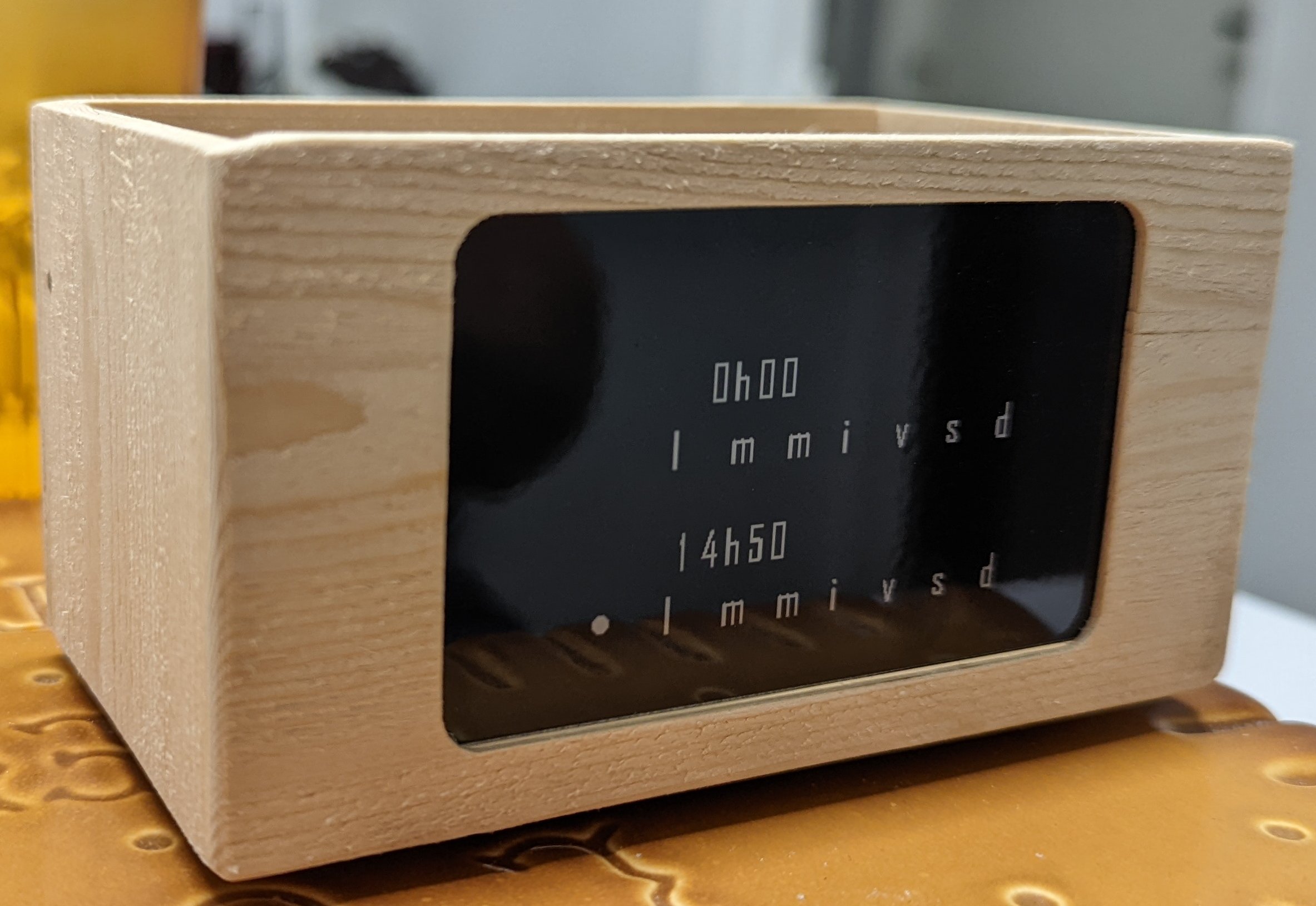Alarm clock
Purpose
The goal of this project is to build a physical alarm clock with same functionalities that a phone alarm clock:
- configure alarm day by day
- postpone alarm by one day
- deactivate the alarm on public holidays
Project is still under development
Design
This is the initial design drawn on inkscape:
Here is the current result of the box and the screen:
Hardware
MCU
Several constraints on this project:
- access to internet via Wifi
- Digital Analog Converter (DAC) to play music
- several inputs/outputs for the buttons
I chose an Arduino mkr1010 which is a circuit containing a Cortex-M0 SAMD21 and a wifi chip too. Arduino provides all the environnement to quickly start using the chip.
Screen
Screen is an e-ink screen of 3.7 inches from Waveshare: https://www.waveshare.com/product/3.7inch-e-paper.htm.
Waveshare provides a driver for this screen.
MCU and screen and connected via SPI.
Buttons
There are 11 buttons to be connected to the MCU:
- 2 menu buttons to select the alarm and enter clock/setting screen
- 4 buttons to configure the alarm clock
- 7 buttons to select the day of the alarm
The 2 menus buttons and the 4 alarm configuration buttons can be pushed at any time, so they
are connected to interrupt pin of the MCU.
The 7 buttons to select day of the alarm are active only when configuring the alarm. To minimize
the number of pin used, those buttons are multiplexed to two of the Analog to Digital Converter (ADC)
of the MCU.
I made my own PCB to be able to connect easily all buttons and the screen to the Arduino. Schematic will be uploaded soon.
Speaker
I use a 2W 8ohm speaker with PAM8302A amplifier. Music files are stored on an external SD card. Sound is produced with the 10 bit DAC of the Arduino board.
Software
- Arduino provides drivers for SAMD21 and NINA-W102 (Wifi chip)
- Waveshare provides a driver for the screen
- Various libraries are used such as
RTCZeroorFlashStorage_SAMDdeveloped by the Arduino community This project is mostly focused on the application part.
Application is structured around a Finite State Machine (FSM). There are many ways to implement a FSM, I used this one: https://www.state-machine.com/doc/PSiCC2.pdf
FreeRTOS is used as the scheduler.


